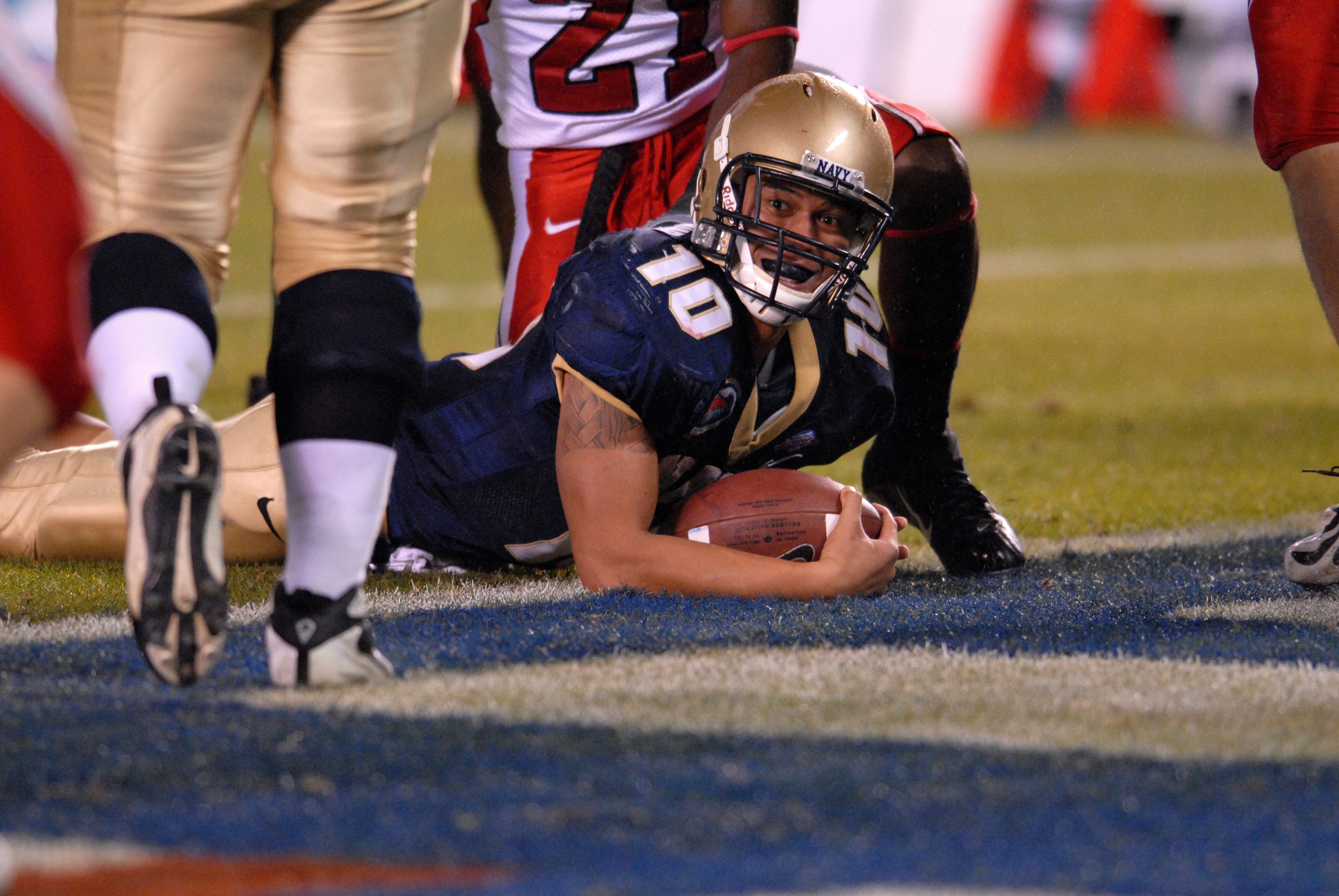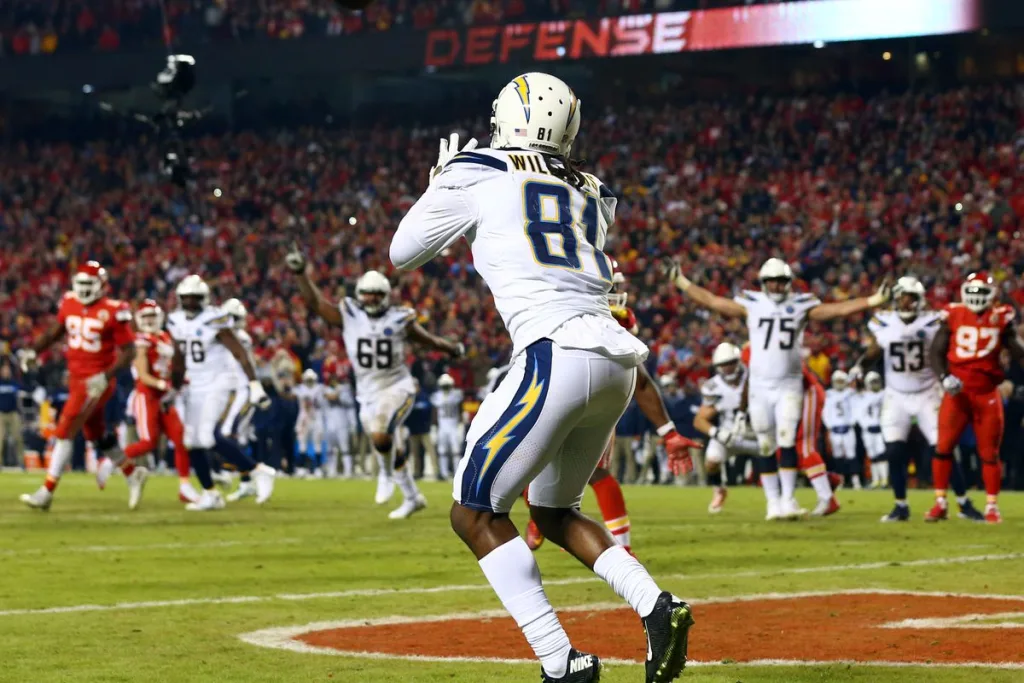Have you ever been in a situation where your team was down by one point and needed to score a two-point conversion to win the game? It’s an exciting and nerve-wracking moment, as one play culd decide the fate of the game. But what exactly is a two-point conversion, and can you intercept it? Let’s take a look at what goes into a two-point conversion and how it affects the outcome of a game.
A two-point conversion is an offensive play used to gain two points instead of one. This is done after scoring a touchdown. Instead of kicking an extra point, the offense has the option to go for two points by running or passing the ball into the end zone from the three-yard line. If successful, they are awarded two points instead of one for their touchdown.
The decision to go for a two-point conversion depends on several factors including timeouts, score differential, and confidence in your offense’s ability to execute the play. It is often used late in games when teams are down by only one point and need to score twice in order to win.
So what happens if you intercept a two-point conversion try? A defensive team is eligible to score on an offensive two-point conversion attempt. If the offense turns the ball over, via interception or fumble, the defense has the opportunity to return the ball to opposite end zone for 2 points. This is sometimes called a “pick-two” as it is a defensive two-point conversion rather than a touchdown.
In addition, there are also rare occurrences of “one-point safeties” which can be scored by either team on an extra point or two-point conversion attempt – these have occurred at least twice since 1996 in NCAA Division I football.
It’s important for teams to understand that going for 2 can be risky but can also provide great rewards if successful! Knowing when and how to use this strategy could make all the difference between winning or losing in close games!
Intercepting a 2-Point Conversion
When a defensive team intercepts a two-point conversion attempt, they have the opportunity to score two points for their team. The defender who intercepted the ball is eligible to run with the ball in an attempt to reach the opposite end zone. If they can make it all the way, they will be awarded two points for their team. However, if they are tackled before they reach the end zone, or if they fumble or turn over the ball in any other way, then no points will be awarded.

Source: en.wikipedia.org
Consequences of an Interception on an Extra Point Attempt
If an extra point is intercepted, the defensive team can attempt to return the interception for two points. This is referred to as a “pick-two”. The defensive player must advance the ball from their current position in order to score. If the defensive player returns the interception to the other end zone, then two points are awarded for their team. In some leagues, if the defender does not reach the end zone and instead is tackled in-bounds, then one point is awarded for the defensive team.
Consequences of Returning a 2 Point Conversion
If a team successfully completes a two point conversion, they will earn an additional two points on top of the six points for the touchdown, making their total score eight points. If they fail to complete the two point conversion, no additional points are scored and the team will proceed to a kickoff if there is time left in the half.
Has a Safety Ever Occurred on a Two-Point Conversion?
Yes, there have been at least two safeties on two-point conversion attempts in NCAA Division I football since 1996. The most recent instance of a safety on a two-point conversion occurred at the 2013 Fiesta Bowl during a game between Baylor and UCF. During the fourth quarter, UCF quarterback Blake Bortles attempted a two-point conversion pass that was intercepted by Baylor defensive back Terrell Burt and returned for a safety, giving Baylor an additional two points and securing their victory. This is not a common occurrence, however; no conversion safeties have occurred since 1940.
The Rarest Score in Football
The rarest score in football is 1-0, which has been achieved only 17 times since the year 2000. This is a very low score because it is so difficult for one team to score a goal and for the other team to be unable to respond. To put it into perspective, there have been more 0-0 draws (73) than 1-0 victories in the last 80 years! In addition, 1-1 draws (622) are much more common than 1-0 victories. This shows how rare it is for one team to overcome the other and win the match with such a low scoreline.

Source: chapelboro.com
Impossible Football Scores
The only score not possible in football is 5 to 1. This score can only occur after a field goal and a conventional safety, but the rules of football state that a team can only score two points from a safety. Therefore, it is impossible for a team to win with this score.
Does an Interception on a Two-Point Conversion Count?
No, an interception on a two-point conversion does not count. This is because two-point conversions are not considered plays from scrimmage or timed downs, meaning that no stats for the play are recorded. An interception on a two-point conversion will not be credited to any player’s stat line for passing, rushing or receiving yards, fumble, sack or interception.
Advancing a Blocked Extra Point
Yes, you can advance a blocked extra point as long as the ball has not touched the end zone or gone out of bounds. Once the extra point is blocked and goes beyond the line of scrimmage, it is considered a dead ball. The defensive team can pick up the ball and move it forward, either by running or passing. However, any advancement of the ball must be done before it touches the end zone or goes out of bounds.
Consequences of Blocking an Extra Point and Running It Back
If a defensive player blocks an extra point attempt, they have the opportunity to return it for two points. This is because it is not considered a touchdown and thus counts as two points. The team that blocked the kick must be careful not to fumble the ball, as possession would then be given back to the offensive team. If the defensive team is able to maintain possession and return it, they will receive two points. This can be a huge momentum shift in a game and can make or break a win or loss of either team.

The Consequences of a Missed Two-Point Conversion
Yes, a defensive team can return a missed two-point conversion attempt for two points. If the offense fumbles or throws an interception on the two-point conversion attempt, the defense can scoop up the ball and return it for a touchdown, resulting in two points for the defensive team. This rule was introduced in 2015 and has been met with much enthusiasm from fans and players alike. Additionally, if the offense misses an extra point attempt, then the defense can also scoop up the ball and return it for two points.
Understanding the 3 Point Conversion in Football
A 3 point conversion in football is a scoring option that is available in the newly formed league. After scoring a touchdown, teams have the option to attempt an extra point from the 10-yard line that would be worth three points if successful. This new league has introduced this extra point option as an alternative to the traditional one or two-point conversions typically seen in both NFL and college football.
Can a Team Attempt a Two-Point Conversion After Scoring a Touchdown?
Yes, a team can attempt a two-point conversion after scoring a touchdown. In American football, teams have the option to attempt a two-point conversion instead of the standard one-point conversion after scoring a touchdown. This is done by running or passing the ball from the two-yard line into the end zone for two points. The rules for this vary in different leagues and levels of football, but typically require that if the attempt is unsuccessful, the opposing team will take possession of the ball at their own 20-yard line. Teams must weigh their chances of success agaist the risk of giving up an easy interception or fumble and deciding whether to kick for one extra point or go for two points.
Is One-Point Play Possible in Football?
Yes, thre is a 1 point play in football. It’s called a 1 point safety and it is an extremely rare occurrence. The 1 point safety occurs when the team that is trying to score a 2-point conversion or PAT turns the ball over and the defense takes the ball out of the end zone and gets tackled in their own endzone, resulting in a single point for the defense. This can happen if, for example, an interception is thrown on a 2-point conversion attempt or if a fumble by the offense results in the ball being taken out of their own endzone by the defense.
Is the Three-Point Conversion a Viable Option?
Yes, a three-point conversion is an option available to teams during football games. It’s an alternative to the traditional two-point conversion and allows teams to score an extra point on one play from their opponent’s 10-yard line. Onside kicks are allowed or can be replaced by a 4th-and-12 from their own 33-yard line. Additionally, overtime periods consist of alternating possessions from an opponent’s 2-yard line. All of these options give teams more chances to score additional points and potentially win the game.
Has a One-Point Safety Ever Occurred?
Yes, thre have been 1-point safeties in football. A 1-point safety is a rare occurrence, typically resulting from a blocked extra point attempt. The most famous example of a 1-point safety occurred on November 4th, 2006 during an Oregon vs Kansas State game. In this instance, the Oregon Ducks scored a touchdown, but the ensuing extra point attempt was blocked by a Kansas State player. The ball was then picked up by another Kansas State player who ran it back into his own end zone and was downed for a 1-point safety. This marked the first time in college football history that a team had achieved a 1-point safety.
Conclusion
In conclusion, it is possibe for a defensive team to score on an offensive two-point conversion attempt. If the offense turns the ball over via interception or fumble, the defense has the opportunity to return the ball to the opposite end zone and earn two additional points, resulting in a total of eight points. On rare occasions, an offensive team can also score one-point (or conversion) safeties on extra point or two-point conversion attempts. Understanding how two-point conversions work is important for any fan of American football as this play can be a game changer and provide a team with critical momentum shifts.
